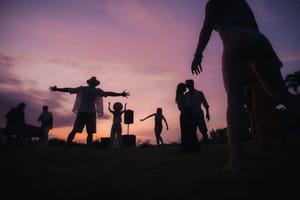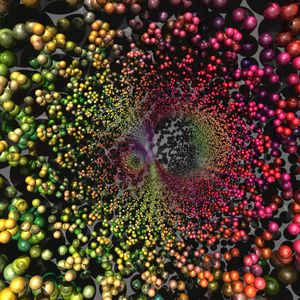The Secret to Longevity Isn't Hidden, It's Designed
Recently I found myself walking through a typical suburban neighborhood—cars zooming past, people hurrying between errands, processed food advertisements everywhere—and I had this striking realization: we're living in environments literally designed to make us sick, tired, and disconnected.
What if I told you that the solution to chronic fatigue and burnout isn't another supplement or workout plan? What if the most powerful medicine is actually reshaping your environment to make health the default setting?
Would you like to dive deeper into environmental medicine?
The 3 Major Challenges We're Here to Solve Together
- Driver vs. Passenger Mindset: Most of us accept our depleting environments as "just the way things are" rather than recognizing we can redesign them.
- Victim vs. Hero Narrative: Many believe their zip code or circumstances determine their health destiny, missing the opportunity to become architects of their own Blue Zone.
- Self-Care vs. Selfishness Belief: Creating health-generating environments feels "selfish" to many, when it's actually the foundation for serving others from a place of vibrant energy rather than depletion.
Want to connect with others creating their own Blue Zones?
The SelfCare Framework: Learn-Do-Embody-Teach
Environmental medicine follows our core framework:
1. LEARN: Understanding Environmental Impact
Would you be open to considering that your environment might have more influence on your health than your willpower or genetics? Research shows your surroundings shape every habit, relationship, and health choice you make—often without your conscious awareness.
2. DO: Creating Micro-Blue Zones
Small environmental changes compound dramatically over time. The research is clear: you don't need to move to Okinawa to experience Blue Zone benefits—you can start redesigning your home, neighborhood, and daily routines today.
3. EMBODY: Becoming Environmental Medicine
When you create healing spaces, you become the embodiment of environmental medicine for everyone around you. Your transformed environment naturally shapes the health of your family, friends, and community.
4. TEACH: Spreading Environmental Healing
The ultimate purpose is creating ripples of environmental transformation that extend beyond yourself, helping others escape the burnout and disconnection of modern life through shared wisdom and community design.
Environmental Medicine: The Four Pillars of Longevity Spaces
The difference between Blue Zones and typical modern environments isn't accident or luck—it's design. What if I showed you how to create spaces that make vibrant health almost inevitable?
Movement By Design
In Nicoya, Costa Rica, people don't "exercise"—they simply live in environments where movement is built into daily life. Their homes, work, and social spaces require natural, functional movement that keeps their bodies strong well into their 90s.
Most of us live in spaces designed to eliminate movement, which contributes to fatigue and disconnection. But what if your home and workplace could be gently redesigned to make movement the path of least resistance?
The research clearly shows that environments promoting natural, regular movement throughout the day provide more longevity benefits than intense exercise sessions in otherwise sedentary lives.
Food As Culture
In Sardinia's Blue Zone, food isn't just nutrition—it's cultural medicine passed through generations. Their environment makes healthy eating the default, not a constant battle of willpower against temptation.
How is your food environment currently set up? Most of us live surrounded by processed foods designed for convenience rather than nourishment, leading to chronic energy depletion and unhappiness.
The Blue Zone way isn't about restrictive diets but creating spaces where nutritious, life-giving foods are the obvious, easy choice—where gardens replace lawns and cooking becomes a joyful, social activity rather than another stressful chore.
Connection By Default
Okinawa shows us that connection isn't just nice to have—it's essential medicine. Their practice of "moai" (mutual support groups) creates lifelong bonds that research links directly to their extraordinary longevity.
In our modern environments, isolation has become the default, contributing to feelings of emptiness and lack of purpose. What small changes might create more natural, regular connection in your daily life?
Remember: environments that foster natural social bonds—from front porches to community gardens—make connection medicine an automatic part of life rather than another item on your to-do list.
Purpose Integration
In Loma Linda, purpose isn't something people search for—it's woven into the fabric of their environment. Their community spaces, schedules, and activities naturally create opportunities for meaningful contribution at every age.
Many of us feel unfulfilled because our environments separate purpose from daily life. What if your surroundings could be redesigned to integrate meaningful work, mentorship, and service into your regular routines?
This isn't about adding more to your plate when you're already feeling burned out—it's about reshaping your environment to make purpose an energizing, natural part of each day.
Your Next Step: Creating Your Personal Blue Zone
The journey to environmental medicine begins with a single question: What one aspect of your environment could you reshape this week to make health more natural and depletion less likely?
May I suggest starting with what's directly in your control—perhaps rearranging your home to encourage more natural movement, bringing nature elements indoors, or creating a dedicated space for connection?
Ready to build your own Blue Zone with expert guidance and community support? Join our tribe where connection is medicine.
Want the complete framework for environmental design? The SelfCare Book provides the blueprint for creating spaces where transformation happens naturally.
PRESCRIPTION
ONE Recommendation (6 year old): Create a "movement treasure hunt" at home where finding hidden objects requires climbing, crawling, and exploring different rooms.
ONE Recommendation (Selfcare.DR): Conduct an "environment audit" of your home and workspace, identifying three specific changes that would make movement, nutrition, connection, and purpose more natural daily experiences.
Key Research References:
Level 1 evidence - Systematic reviews
- Buettner, D. & Skemp, S. (2016). "Blue Zones: Lessons From the World's Longest Lived." American Journal of Lifestyle Medicine.
- Frumkin, H., et al. (2017). "Nature Contact and Human Health: A Research Agenda." Environmental Health Perspectives.
- Holt-Lunstad, J. (2017). "The Potential Public Health Relevance of Social Isolation and Loneliness: Prevalence, Epidemiology, and Risk Factors." Public Policy & Aging Report.
Level 5 evidence - Accredited Health Experts cited
- Dan Buettner, National Geographic Fellow and Blue Zones researcher
- Dr. Howard Frumkin, environmental health expert
- Jan Gehl, architect and urban design expert
Other
- Buettner, D. (2012). The Blue Zones: 9 Lessons for Living Longer From the People Who've Lived the Longest. National Geographic.
- Montgomery, C. (2013). Happy City: Transforming Our Lives Through Urban Design. Farrar, Straus and Giroux.
- World Health Organization. (2018). "The Age-Friendly Cities Framework and Indicators."
REFERENCES
This is directly referenced from the amazon best-selling SelfCare Book "Lifestyle Medicine For the People" by Rory Callaghan. If you would like to read more content like this, grab the free online chapters of the book or a hard copy.
We have done our best to reference everyone's expert opinions, peer-reviewed science, and original thoughts, all references available here and referenced in the text.
We also understand that most thoughts are not our own and there is a collective unconsciousness, unconsciousness, and universal mind stream of energy that is always at work. How are references are sorted and filtered is here.
This article is for informational purposes only and should not replace professional medical advice. Always consult with your healthcare provider before beginning any new health regimen.




